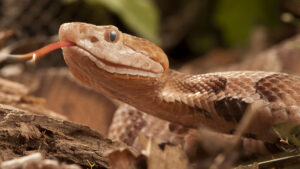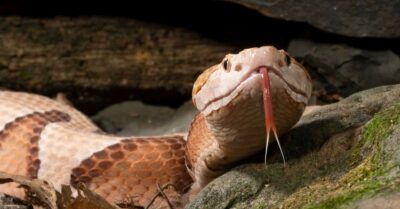Ever found yourself wandering through the intriguing world of snakes and wondered, “Do copperheads lay eggs?” Well, you’re in the right place! Today, we’re going to unravel the mysteries surrounding the reproduction habits of copperheads, those fascinating pit vipers that inhabit various regions of North America.
Copperheads are ovoviviparous, which means that they give birth to live young instead of laying eggs. Female copperheads retain fertilized eggs within their bodies until the offspring are ready to be born. This adaptation allows the mother to provide protection and nourishment to her developing offspring.
Copperheads typically give birth to a brood of 4 to 10 live snakes, and this process occurs in late summer or early fall. So, in summary, no egg-laying for copperheads – they take a more direct approach to expanding their slithering family.
Do copperheads lay eggs?

No, copperheads do not lay eggs; they give birth to live young. Copperheads are a species of venomous pit viper snake found in North America. Like most pit vipers, including rattlesnakes and cottonmouths, copperheads are viviparous, meaning they give birth to live offspring. The female retains the eggs inside her body until they hatch, and then she gives birth to fully formed snakes.
This reproductive strategy allows the mother to provide some level of protection and care to her offspring before they enter the outside world. Copperheads typically give birth to a small number of live snakes in late summer or early fall.
Here are some additional details about copperhead reproduction:
- Copperheads typically mate in the spring, although fall mating can also occur.
- The female will carry the fertilized eggs for about 3-4 months.
- She will give birth to 4-8 live young in late summer or early fall.
- The young are born encased in a thin membrane, which they break free from shortly after birth.
- Newborn copperheads are about 7-9 inches long and are venomous from birth.
- The mother does not provide any parental care for her young.


